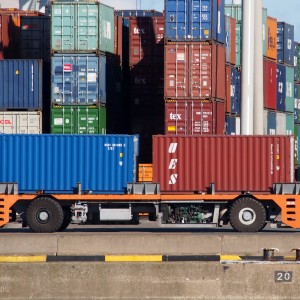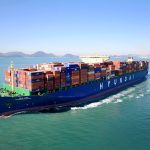Amazon’s U.S. Delivery Drone Marks Shipping’s Move Toward Automation
 It’s official. People are obsolete. Okay, not really. But by watching the video above that was posted on Youtube by James Vincent, you can see how technology is taking over shipping.
It’s official. People are obsolete. Okay, not really. But by watching the video above that was posted on Youtube by James Vincent, you can see how technology is taking over shipping.
According to Business Insider, this video represents the first time a U.S. delivery from an Amazon drone has been publicly recorded by an observer. Apparently, the drone delivered sunscreen, which makes sense because this delivery happened in Palm Springs, CA.
With talk about automated ports, driverless trucks, and now drones delivering packages, automation is a hot topic in international shipping right now.
Of course, when you’re hiring a freight forwarder, you’re not shipping something small enough to be delivered by a little drone. However, a giant drone could, theoretically, deliver a 20′ shipping container. But that’s not the point. The advancements in technology that can make shipping more efficient is what makes a video like this so fascinating.
This video won’t be looked back on as some fantastic piece of cinematography or storytelling. In fact, it will probably be quickly forgotten. However, what it represents--the fact that a package can be delivered right to your door without a delivery person--will be remembered.
There is, of course, a downside to automated shipping. Delivering packages is a job someone has. Drones and driverless trucks threaten to take jobs from drivers and delivery people. And some people are up in arms about that.
No one is more up in arms about technology’s threat to jobs than the dockworkers and their unions at the ports.
Port automation is projected to be a major point of contention in the upcoming contract negotiations between the International Longshoremen’s Association (ILA) and the United States Maritime Alliance (USMX).
The unions at U.S. ports have long fought against port automation for the obvious danger it poses to jobs held by union longshoremen. Unfortunately, this has helped put U.S. ports behind in terms of technological advancements and efficiency.
Ironically, one of the biggest weapons the ILA and its sister union the International Longshore & Warehouse Union (ILWU) utilize to fight against port automation (and other issues they have with port employers) is decreasing port efficiency through labor slowdowns and strikes.
Unfortunately for the ILA and ILWU, fighting against technological advancements is a losing battle. The advancements can be slowed, but as James Vincent’s video shows, technology is changing how shipping is done and people are excited about that change.
It should be noted that technological advancements in shipping automation does not just end jobs. These advancements also create tech jobs.
The hard negotiated contracts between the unions and employers at the ports will certainly include union members being trained in the use, upkeep, and oversight of new technology at the ports.
For shippers, automation is exciting. The potential is there to lower the costs of shipping while increasing its dependability and efficiency. However, there are plenty who worry about the inevitable hiccups that will happen along the way.
We’re now at a time of looking at the future of a changing industry. The question no longer is could the shipping process be automated from picking up cargo, delivering it to the ports, loading it on ships, transporting it across the sea, unloading it from the ships, to finally delivering the cargo to its destination. The question now is when will all this be automated.




